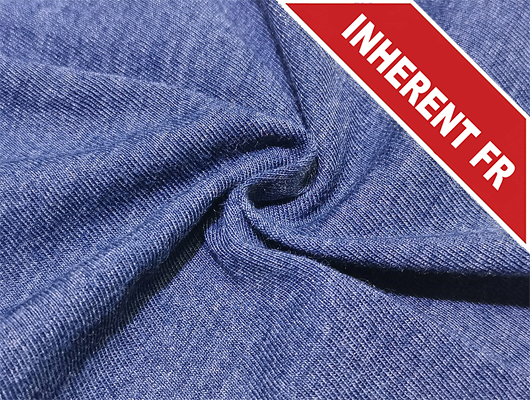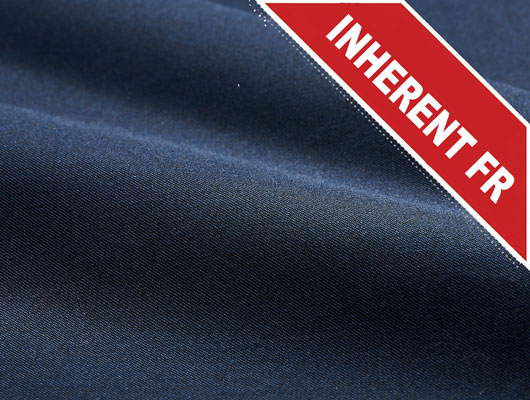(Textile Knowledge) Dyeing of Polyester/Cotton Fibers with Disperse/Reactive Dyes
2015-08-20
A reactive disperse dye containing a temporarily anionic sulphatoethylsulphone and nonionic disulphide bis (ethylsulphone) groups was applied to cotton/polyester fiber by the exhaust dyeing at a verity of pH and temperature conditions. A mono functional reactive disperse containing only nonionic disulphide bis (ethylsulphone) groups was also its dyeing behaviour was compared with the bifunctional dye. The bifunctional reactive disperse dye exhibited high exhaustion and fixation values at pH 6 and 1200C.
The result also indicate that the combination of temporarily anionic and nonionic reactive groups of the bifunctional dye provided great enhancement in dyeing performance compared to that of monofunctional dye. The dye also showed very good leveling and fastness properties.
For satisfactory dispersion in the dye batch, the dyes were initially finished by mortar milling in the presence of a specially selected dispersing agent. Cotton/Polyester fabrics were dyed in Atlas dyeing machine at a liquor ratio of 40:1 using distilled water. The dye batch was prepared with the dye at range of dye concentrations (0.5 %, 1%, 1.5%, 2% and 3% owf) and with 1.5 g/l anionic dispersing agent (Avolan IS Bayer Co.). The pH was then adjusted to 4, 6, 7, 8, 9 and 10 using 10% acetic acid and 0.2 mol sodium carbonate solution. Dyeing was started at 450C for 15 minutes, then the dye batch temperature was raised at a rate of 1.5-2 C/min to 90, 100, 110, 120 and 130 0C and the dyeing continued at the desired temperature for a further 60 minutes unless otherwise specified. Dyeing was commenced at 700C. The dye batch temperature was raised by 1 C/min to 1300C, maintained at this temperature for 60 minutes and cooled to 600C. After 30 minutes at 600C, 20g/l of alkali (Na2Co3) was added to effect fixation of the dye on cotton and maintained at 600C for further 30 minutes. The dyeing were rinsed and soaped at 950C for 15 minutes with 1.5 g/l soaping agent.
For satisfactory dispersion in the dye batch, the dyes were initially finished by mortar milling in the presence of a specially selected dispersing agent. Cotton/Polyester fabrics were dyed in Atlas dyeing machine at a liquor ratio of 40:1 using distilled water. The dye batch was prepared with the dye at range of dye concentrations (0.5 %, 1%, 1.5%, 2% and 3% owf) and with 1.5 g/l anionic dispersing agent (Avolan IS Bayer Co.). The pH was then adjusted to 4, 6, 7, 8, 9 and 10 using 10% acetic acid and 0.2 mol sodium carbonate solution. Dyeing was started at 450C for 15 minutes, then the dye batch temperature was raised at a rate of 1.5-2 C/min to 90, 100, 110, 120 and 130 0C and the dyeing continued at the desired temperature for a further 60 minutes unless otherwise specified. Dyeing was commenced at 700C. The dye batch temperature was raised by 1 C/min to 1300C, maintained at this temperature for 60 minutes and cooled to 600C. After 30 minutes at 600C, 20g/l of alkali (Na2Co3) was added to effect fixation of the dye on cotton and maintained at 600C for further 30 minutes. The dyeing were rinsed and soaped at 950C for 15 minutes with 1.5 g/l soaping agent.
Effect of pH dyeing temperature
The effect of pH and temperature on the exhaustion and fixation of the disperse reactive dyes using 2% owf dye concentration. For dyeing were carried out and different temperature (90-1300C) at pH from 4 to 10, the exhaustion and total fixation of dye in Figure 2 respectively. The results show that dye is characteristically insensitive to temperature at 110-1300C and maximum fixation at 1200C and pH 6. The higher dyeing temperature at 110-1300C can bis (ethylsulphone) B-elimination reaction, which could dye fiber fixation through the high reactive and low molecular bifunctional bis (ethylsulphone).
Effect of Dyeing Time
The effect of dyeing time on the extent of exhaustion and total fixation yield of dye assessed. Figure 3 show the build up of both dyes on cotton polyester fiber examined with 2% owf dye concentration at pH6 and at optimum dyeing temperature of 1300C. The result indicates that the dyeing rates of the groups. At the early stage of dyeing using dye the percentage of dye exhaustion increases signification until 50 min, probably due to its high substantively, then equilibrates as the dyeing proceeds. This means that the vinyl Sulphone derivatives obtained from the sulphatoethylsulphone and disulphide bis(ethylsulphone) groups increase and the reaction with cotton polyester increases, so that the dye equilibrates is achieved at a shorter dyeing time.
Effect of Dyeing Concentration
The extent of the dye exhaustion and total fixation yield of dyeing cotton polyester fiber with different concentration of the reactive disperse dye (0.5-3% omf) was investigated. All the dyeing was carried out at the optimum dye (pH 6,120c and 100 minute). The result is shown in Figure 4.
Disperse reactive dye containing both temporarily anionic sulphatoethylsulphone and nonionic) disulphide bis (ethylsulphone) reactive groups has been applied to cotton polyester fabric by exhaust dyeing. The optimum exhaustion and fixation were achieved at pH 6 and at the dyeing temperature of 1300C. This dye exhibited a good build-up even at the conventional dyeing temperature of 90-100 because of its high substantively resulted from the temporarily anionic sulphatoethylsulphone groups. The B-elimination of both, temporarily anionic sulphatoethylsulphone and nonionic Disulphide bis (ethylsulphone) group, result in the formation of bis (ethylsulphone) derivatives which increase the dye-fiber fixation.
The dyeing performance of such a sulphatoethylsulphone disulphide bis (ethylsulphone) reactive disperse dye on cotton polyester fiber should lead to the design of novel reactive disperse dye with good application properties.

Choose Tianyu, Choose Quality, Choose Satisfaction.
Pre: Tianyu Textile Special Offer
Next: Holiday Notice!







